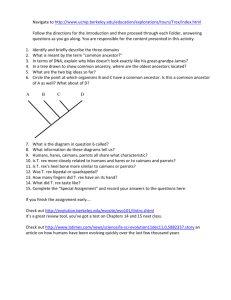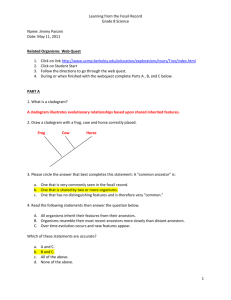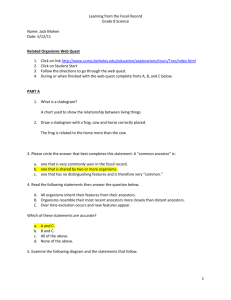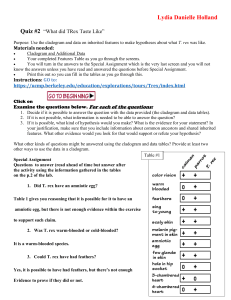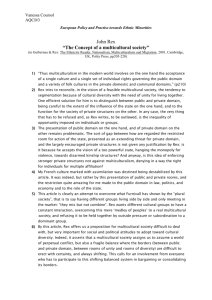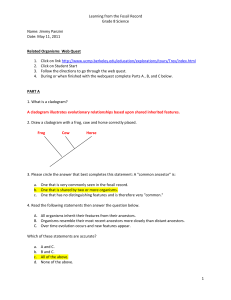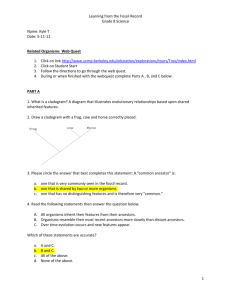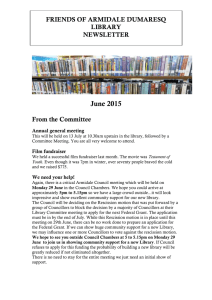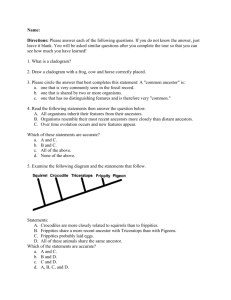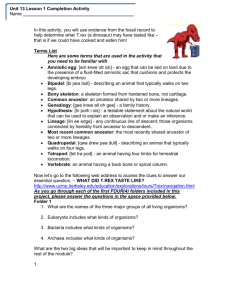T. Rex Taste Like Chicken: Evolution & Cladograms
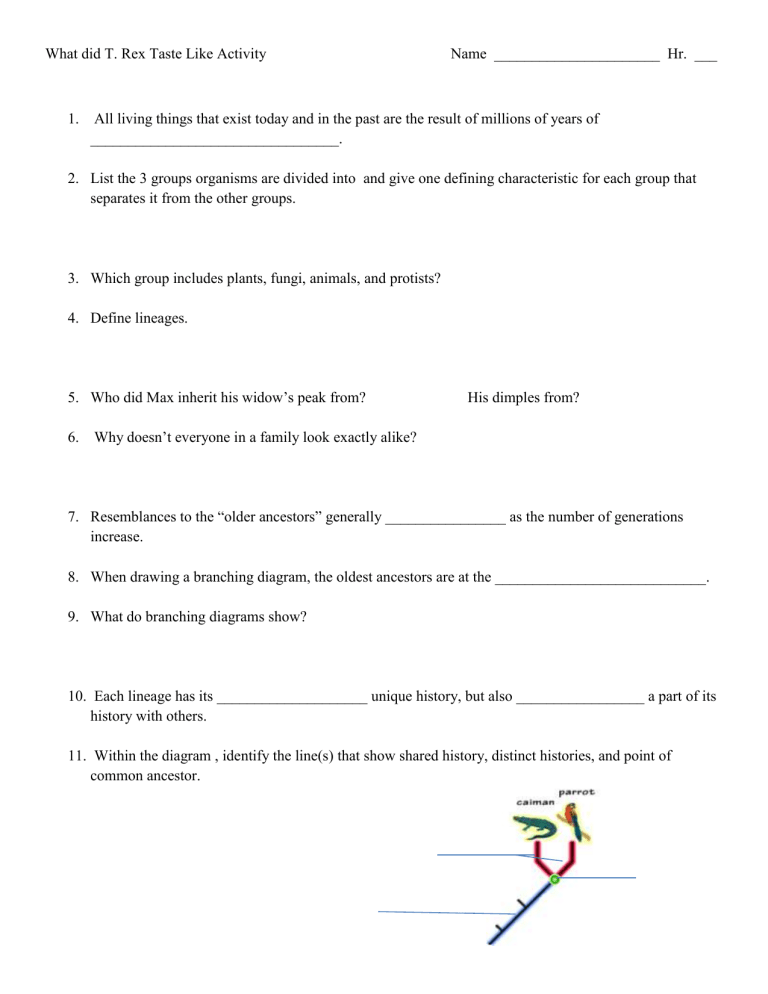
What did T. Rex Taste Like Activity Name ______________________ Hr. ___
1.
All living things that exist today and in the past are the result of millions of years of
_________________________________.
2.
List the 3 groups organisms are divided into and give one defining characteristic for each group that separates it from the other groups.
3.
Which group includes plants, fungi, animals, and protists?
4.
Define lineages.
5.
Who did Max inherit his widow’s peak from? His dimples from?
6.
Why doesn’t everyone in a family look exactly alike?
7.
Resemblances to the “older ancestors” generally ________________ as the number of generations
8.
When drawing a branching diagram, the oldest ancestors are at the ____________________________.
9.
What do branching diagrams show? increase.
10.
Each lineage has its ____________________ unique history, but also _________________ a part of its history with others.
11.
Within the diagram , identify the line(s) that show shared history, distinct histories, and point of common ancestor.
12.
Which two organisms are more closely related to each other: A and C or B and C or A and B? Why?
13.
What do we call animals with 4 limbs?
14.
Describe an amniotic egg.
15.
What characteristic trait do humans and hares have in common that caiman and parrots do not share?
16.
What characteristic trait do caimans and parrots have in common that humans and hares do not share?
17.
What characteristic trait does all the organisms in the cladogram below share?
18.
List 5 organisms in cladogram above that are tetrapods.
As you explore Folder 4, fill in the data tables below using the symbols: +, 0 , -, or ?
Directions: Using the caldogram above answer the following questions.
19.
What evidence did we use to determine that T. Rex tasted like chicken ? a.
T. Rex’s heel bone does not have a bump b.
T. Rex is bipedal c.
T. Rex has a reduced number of fingers d.
a and b above e.
b and c above
20.
Because T. Rex was bipedal and had a reduced number of fingers, we can infer: a.
that T. Rex was more closely related to birds than to crocodiles b.
that T. Rex and birds inherited these features from a common ancestor c.
that T. Rex probably shares more features with birds than with other vertebrates d.
all of the above e.
none of the above
